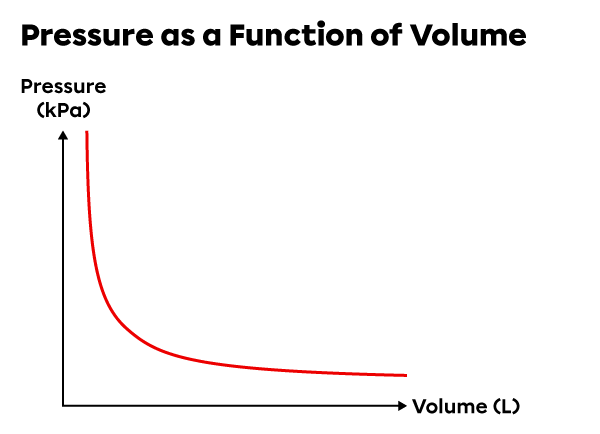Simple gas laws describe the physical properties of gas like pressure |(P),| volume |(V),| number of moles |(n)| and temperature |(T).|
There are 5 simple gas laws. Each one of them describes the relationship between two physical properties, while the others are constant.
The following table summarizes the simple gas laws. To explore a law in more detail, click on its name.
|
Name |
Description and graph | Formulas |
|---|---|---|
|
The pressure |(P)| is inversely proportional to the volume |(V)| if the number of moles |(n)| and the temperature |(T)| are constant. |
If |n| and |T| remain the same: ||\begin{align} |
|
|
The pressure |(P)| is directly proportional to the absolute temperature |(T)| if the number of moles |(n)| and the volume |(V)| are constant. |
If |n| and |V| remain the same: ||\begin{align} |
|
|
The volume |(V)| is directly proportional to the absolute temperature |(T)| if the number of moles |(n)| and the pressure |(P)| are constant. |
If |n| and |P| remain the same: ||\begin{align} |
|
|
The volume |(V)| is directly proportional to the number of moles |(n)| if the pressure |(P)| and the temperature |(T)| are constant. |
If |P| and |T| remain the same: ||\begin{align} |
|
|
The pressure |(P)| is proportional to the number of moles |(n)| if the volume |(V)| and the temperature |(T)| are constant. |
If |V| and |T| remain the same: ||\begin{align} |
When the simple gas laws all come together, we get the general gas law |\left(\dfrac{P_1V_1}{n_1T_1}=\dfrac{P_2V_2}{n_2T_2}\right)| and the ideal gas law |(PV=nRT).|
Simple gas laws only apply to ideal gases.
The values calculated using the simple gas laws correspond approximately to the real values, as long as the gas temperature is not too low and the pressure is not too high.




